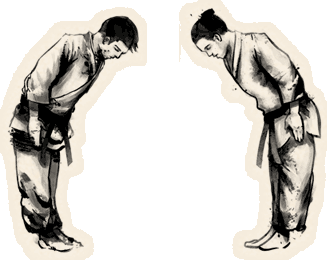When Do You Salute?
It was a long-established military custom for
juniors to remove their head gear in the presence
of superiors. In the British Army as late as the
American Revolution, a soldier saluted by removing
his hat. But, with the advent of a more cumbersome
head gear in the 18th and 19th centuries, the act
of removing one’s hat was gradually converted into
the simpler gesture of grasping the visor and
issuing a courteous salutation. From there, it
finally became conventionalized into something
resembling our modern hand salute. As early as
1745, a British order book states that: “The men
are ordered not to pull off their hats when they
pass an officer, or to speak to them, but only to
clap up their hands to their hats and bow as they
pass.” The salute has always been used to indicate
a sign of RESPECT.
I usually don’t salute to anyone. In the
traditions that I was brought up in, it is
customary to bow. This morning, as I walked down
the beach, someone was gliding by with a parachute
that had a big fan attached to it. He was around
fifty feet above the water, it looked very cool.
As I raised my right arm to block the sun to watch
him, a guy sitting in front of me saluted me back.
I guess he was in the military and that was his
natural response.
When I was twelve or thirteen years old, I was
destroying too much stuff around the house. My
mother was at her wit’s end. She wanted to take me
to the doctors and have him give me a drug to calm
me down. But, my Dad said, “No way, I’ll handle
this!” He put me in martial arts classes right
after school. By the time I got home after
practice, I wasn’t destroying anything. I just
wanted to eat and go to sleep. I was taught
discipline at every class. I remember that, when
we walked onto the training room, we paused and
bowed before we entered. My teacher explained that
when we bowed, we were showing respect for the
masters and the dojo or the place where we
practiced. Since then, I always bow when I walk
into any martial arts school, regardless of the
style that they practice there. When I walk into a
meditation hall or temple, I always automatically
bow as well.
In most martial arts schools, bowing is very much
a part of their culture and tradition. Whether it
is bowing when you enter the school, to
classmates, or to instructors, most schools have
this as a normal practice. The act of bowing is a
social gesture seen in just about every culture
throughout the world. This was often done as a
sign of respect or gratitude. The bow, and the
phrase, “Namaste,” which literally means, “I bow
to you” is commonplace in most yoga classes. In
Japan, the bow takes on an all-new meaning based
upon the situation, depth of the bow, and the
length of time it is held. The Japanese believe
that the head is the most important part of the
body. By bowing, they are showing their respect
and gratitude. The early training that I had as a
child has taught me to have more respect and
gratitude for others, including the teacher and
the teachings.
I wish you the best in your Health, Wealth and
Happiness.
Dr. Wu Dhi

